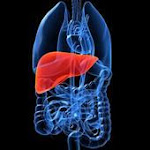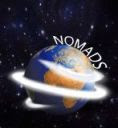Is There A Santa Claus? (Hepatitis C / Liver Transplant (Hep C) HCV Blog)
Saturday, 4 December 2010
This is something that I read on 'HCV Supports' December Newsletter that I couldn't resist sharing with you.....
(they can be found at: http://www.hcvsupport.org/)
Is There A Santa Claus?
Eight-year-old Virginia O'Hanlon wrote a letter to the editor of New York's Sun, veteran newsman Francis Pharcellus, and his quick response was printed as an unsigned editorial on Sept. 21, 1897. It has become history's most reprinted newspaper editorial.
------------------------------------------------------------------------------------
"DEAR EDITOR:
I am 8 years old. Some of my little friends say there is no Santa Claus. Papa says, 'If you see it in THE SUN it's so.' Please tell me the truth; is there a Santa Claus?
"VIRGINIA O'HANLON.
"115 WEST NINETY-FIFTH STREET."
Reply:
"VIRGINIA, your little friends are wrong. They have been affected by the skepticism of a skeptical age. They do not believe except [what] they see. They think that nothing can be which is not comprehensible by their little minds. All minds, Virginia, whether they be men's or children's, are little. In this great universe of ours man is a mere insect, an ant, in his intellect, as compared with the boundless world about him, as measured by the intelligence capable of grasping the whole of truth and knowledge.
Yes, VIRGINIA, there is a Santa Claus. He exists as certainly as love and generosity and devotion exist, and you know that they abound and give to your life its highest beauty and joy. Alas! how dreary would be the world if there were no Santa Claus. It would be as dreary as if there were no VIRGINIAS. There would be no childlike faith then, no poetry, no romance to make tolerable this existence. We should have no enjoyment, except in sense and sight. The eternal light with which childhood fills the world would be extinguished.
Not believe in Santa Claus! You might as well not believe in fairies! You might get your papa to hire men to watch in all the chimneys on Christmas Eve to catch Santa Claus, but even if they did not see Santa Claus coming down, what would that prove? Nobody sees Santa Claus, but that is no sign that there is no Santa Claus. The most real things in the world are those that neither children nor men can see. Did you ever see fairies dancing on the lawn? Of course not, but that's no proof that they are not there. Nobody can conceive or imagine all the wonders there are unseen and unseeable in the world.
You may tear apart the baby's rattle and see what makes the noise inside, but there is a veil covering the unseen world which not the strongest man, nor even the united strength of all the strongest men that ever lived, could tear apart. Only faith, fancy, poetry, love, romance, can push aside that curtain and view and picture the supernal beauty and glory beyond. Is it all real? Ah, VIRGINIA, in all this world there is nothing else real and abiding.
No Santa Claus! Thank God! he lives, and he lives forever. A thousand years from now, Virginia, nay, ten times ten thousand years from now, he will continue to make glad the heart of childhood.
-------------------------------------------------------------------------------------
Each year during the Christmas season I share this editorial written by Francis Pharcellus in 1897 to Virginia O'Hanlon with our HCV Support members. For me it is a constant reminder to have faith in those things in life which we cannot touch with our senses, and to hold dear the little child which resides in all of us. With faith and belief anything is possible. For me Christmas is my favorite time of year for it renews our faith and brings out the inner child in all of us.
My hope and wish for all affected by hepatitis C is that Santa will bring them the greatest gift of all .... a CURE! ..and for those awaiting liver transplantation.... The Gift of LIFE with a new liver.
May you all have a very Merry Christmas and a Happy New Year!
Wayne A. Morea
Founder/CEO - HCV Support, Inc. (http://www.hcvsupport.org/)
-------------------------------------------------------------------------------------
Educator, writer. Born Laura Virginia O'Hanlon in 1889. At the age of eight, Virginia O'Hanlon became part of American history as the little girl who questioned the existence of Santa Claus. When she was unable to get a straight answer from her parents, she wrote a letter to the New York Sun newspaper in search of the truth.
As for the little girl in the story, she grew up and became a teacher. O'Hanlon earned a master's degree from Columbia University and a doctorate from Fordham University. For many years, she worked as an educator and school administrator. O'Hanlon also married, and became Virginia O'Hanlon Douglas.
Laura Virginia O'Hanlon Douglas died on May 13, 1971 at the age of 82. In 2005, plans were announced to transform her New York City childhood home into a school, according to the the Sun. A decision of which lifelong teacher O'Hanlon would surely have approved.
I hope you enjoyed it as much as I did.
Take care everyone.... Ian
(they can be found at: http://www.hcvsupport.org/)
Is There A Santa Claus?
Eight-year-old Virginia O'Hanlon wrote a letter to the editor of New York's Sun, veteran newsman Francis Pharcellus, and his quick response was printed as an unsigned editorial on Sept. 21, 1897. It has become history's most reprinted newspaper editorial.
------------------------------------------------------------------------------------
"DEAR EDITOR:
I am 8 years old. Some of my little friends say there is no Santa Claus. Papa says, 'If you see it in THE SUN it's so.' Please tell me the truth; is there a Santa Claus?
"VIRGINIA O'HANLON.
"115 WEST NINETY-FIFTH STREET."
Reply:
"VIRGINIA, your little friends are wrong. They have been affected by the skepticism of a skeptical age. They do not believe except [what] they see. They think that nothing can be which is not comprehensible by their little minds. All minds, Virginia, whether they be men's or children's, are little. In this great universe of ours man is a mere insect, an ant, in his intellect, as compared with the boundless world about him, as measured by the intelligence capable of grasping the whole of truth and knowledge.
Yes, VIRGINIA, there is a Santa Claus. He exists as certainly as love and generosity and devotion exist, and you know that they abound and give to your life its highest beauty and joy. Alas! how dreary would be the world if there were no Santa Claus. It would be as dreary as if there were no VIRGINIAS. There would be no childlike faith then, no poetry, no romance to make tolerable this existence. We should have no enjoyment, except in sense and sight. The eternal light with which childhood fills the world would be extinguished.
Not believe in Santa Claus! You might as well not believe in fairies! You might get your papa to hire men to watch in all the chimneys on Christmas Eve to catch Santa Claus, but even if they did not see Santa Claus coming down, what would that prove? Nobody sees Santa Claus, but that is no sign that there is no Santa Claus. The most real things in the world are those that neither children nor men can see. Did you ever see fairies dancing on the lawn? Of course not, but that's no proof that they are not there. Nobody can conceive or imagine all the wonders there are unseen and unseeable in the world.
You may tear apart the baby's rattle and see what makes the noise inside, but there is a veil covering the unseen world which not the strongest man, nor even the united strength of all the strongest men that ever lived, could tear apart. Only faith, fancy, poetry, love, romance, can push aside that curtain and view and picture the supernal beauty and glory beyond. Is it all real? Ah, VIRGINIA, in all this world there is nothing else real and abiding.
No Santa Claus! Thank God! he lives, and he lives forever. A thousand years from now, Virginia, nay, ten times ten thousand years from now, he will continue to make glad the heart of childhood.
-------------------------------------------------------------------------------------
Each year during the Christmas season I share this editorial written by Francis Pharcellus in 1897 to Virginia O'Hanlon with our HCV Support members. For me it is a constant reminder to have faith in those things in life which we cannot touch with our senses, and to hold dear the little child which resides in all of us. With faith and belief anything is possible. For me Christmas is my favorite time of year for it renews our faith and brings out the inner child in all of us.
My hope and wish for all affected by hepatitis C is that Santa will bring them the greatest gift of all .... a CURE! ..and for those awaiting liver transplantation.... The Gift of LIFE with a new liver.
May you all have a very Merry Christmas and a Happy New Year!
Wayne A. Morea
Founder/CEO - HCV Support, Inc. (http://www.hcvsupport.org/)
-------------------------------------------------------------------------------------
Educator, writer. Born Laura Virginia O'Hanlon in 1889. At the age of eight, Virginia O'Hanlon became part of American history as the little girl who questioned the existence of Santa Claus. When she was unable to get a straight answer from her parents, she wrote a letter to the New York Sun newspaper in search of the truth.
As for the little girl in the story, she grew up and became a teacher. O'Hanlon earned a master's degree from Columbia University and a doctorate from Fordham University. For many years, she worked as an educator and school administrator. O'Hanlon also married, and became Virginia O'Hanlon Douglas.
Laura Virginia O'Hanlon Douglas died on May 13, 1971 at the age of 82. In 2005, plans were announced to transform her New York City childhood home into a school, according to the the Sun. A decision of which lifelong teacher O'Hanlon would surely have approved.
I hope you enjoyed it as much as I did.
Take care everyone.... Ian















0 comments:
Post a Comment